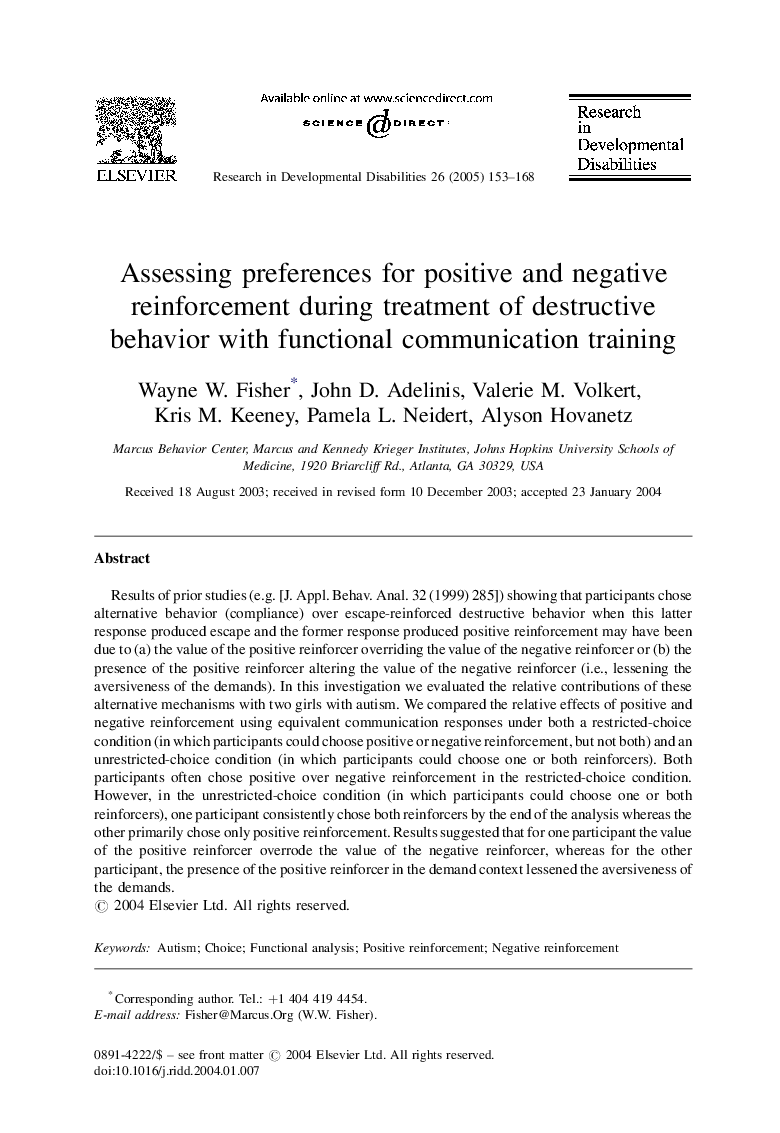| Article ID | Journal | Published Year | Pages | File Type |
|---|---|---|---|---|
| 10318634 | Research in Developmental Disabilities | 2005 | 16 Pages |
Abstract
Results of prior studies (e.g. [J. Appl. Behav. Anal. 32 (1999) 285]) showing that participants chose alternative behavior (compliance) over escape-reinforced destructive behavior when this latter response produced escape and the former response produced positive reinforcement may have been due to (a) the value of the positive reinforcer overriding the value of the negative reinforcer or (b) the presence of the positive reinforcer altering the value of the negative reinforcer (i.e., lessening the aversiveness of the demands). In this investigation we evaluated the relative contributions of these alternative mechanisms with two girls with autism. We compared the relative effects of positive and negative reinforcement using equivalent communication responses under both a restricted-choice condition (in which participants could choose positive or negative reinforcement, but not both) and an unrestricted-choice condition (in which participants could choose one or both reinforcers). Both participants often chose positive over negative reinforcement in the restricted-choice condition. However, in the unrestricted-choice condition (in which participants could choose one or both reinforcers), one participant consistently chose both reinforcers by the end of the analysis whereas the other primarily chose only positive reinforcement. Results suggested that for one participant the value of the positive reinforcer overrode the value of the negative reinforcer, whereas for the other participant, the presence of the positive reinforcer in the demand context lessened the aversiveness of the demands.
Related Topics
Life Sciences
Neuroscience
Behavioral Neuroscience
Authors
Wayne W. Fisher, John D. Adelinis, Valerie M. Volkert, Kris M. Keeney, Pamela L. Neidert, Alyson Hovanetz,
